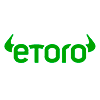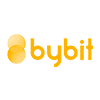
Distributed Ledger Technology for Dummies [2023]
When asked about different types of distributed ledgerDistributed Ledger
A list of transactions that exists on every computer that elects to run blockchain software.
Well, now it’s time we understand that there is more to DLT than blockchain.
Said simply, all blockchains are DLTs, but not all DLTs are blockchains.
In this article, I will explain the concept of distributed ledger technology, and the differences between the more common DLTs such as blockchain, DAGDAG
Directed Acyclic Graphs. Also referred to as “Tangle.” DAG is an alternative to the “chain of blocks” architecture used in many crypto projects.
Hashgraph
Hashgraph is a consensus alternative to blockchain. It uses a gossip protocol to spread transactions across the network by sending data to randomly chosen neighbors.
With that said, welcome to Distributed Ledger Technology for Dummies, where I will clear the air on DLT vs. blockchain in 2023. Let’s get started.
Distributed Ledger Technology (DLT) Defined
First off, what is distributed ledger technology?
If you are unfamiliar with blockchain altogether, then you most likely have no clue what DLT is.
So, let’s preface this distributed ledger technology for dummies guide with a brief definition.
Distributed ledger technology is essentially a database that is shared amongst computers spread around the globe, creating a decentralized
environment rather than a centralized one.Decentralized
Distributed amongst its users rather than controlled by one group or within one certain area.For example, when you go to Facebook and log in, the user authentication process is all done on Facebook’s, centralized database.
Their database stores users’ names and usernames. Alternatively, if Facebook was decentralized, then the user authentication process would be completed by the distributed ledger shared amongst users around the globe.
So, instead of username information being stored at Facebook’s headquarters, it is stored by everyone who is part of the shared, distributed ecosystem. The goal of DLT is to offer a trustless
and safer alternative to centralized services.Trustless
The ability of a system to be trusted without the need of trusting the individuals with which you are transacting.For a decentralized environment to achieve the same functionality as a centralized one requires some different technologies and processes.
How many types of DLTs are there?
There are a few different types of distributed ledger technologies, and more will continue to be invented to improve the existing ones.
For now, I will focus on three popular ones: blockchain, DAG, and hashgraph.
These three will be core to this distributed ledger technology for dummies guide.

They each have their advantages and disadvantages, all to offer the same solution - a fast, reliable, and safe layer for transacting value and data.
One main focus for DLT is on peer to peer electronic cash, like Bitcoin
. I’ll explain each of these with a pragmatic approach.Bitcoin
The first blockchain-based cryptocurrency, launched in 2009. Bitcoin remains the most influential and widely recognized coin. All other cryptocurrencies are known as "altcoins," simply because they are not Bitcoin.To begin, let’s start with blockchain, the most well-known DLT to date.
Blockchain Basics for Dummies
The most widely used and current king of DLT is blockchain technology.
Blockchain is more than just a database, it’s a whole system with moving parts and systems which must work together. It’s a distributed ledger and settlement/transaction processing system all in one.
Blockchain technology was introduced with the advent of Bitcoin, a peer to peer electronic currency.
Blockchain technology requires that all nodes in the network form consensus
.Consensus
A general agreement among participants using and mining a cryptocurrency.This means that when transactions are broadcasted to the network (i.e. Bob sending you 1 Bitcoin), these transactions must be validated by the network.
Each time a cluster of transactions is validated by the network, they are included in the next block
on the chain, and history is recorded. A block is a piece of data that has transactions recorded into it.Block
A segment of data recorded on the blockchain that can contain transactions and other information.In other words, if Bob sends you 1 Bitcoin, then you must wait until that transaction is validated and included in the network’s historical ledger of transactions.
Every 10 minutes a new set of transactions are hashed
, or compacted into a small data set to create the next block.Hash
Output emitted from an algorithm for maintaining consensus on a blockchain.This is why it is called blockchain technology - because it is indeed a chain of blocks.
The users that are responsible for creating new blocks are called miners
, and they are rewarded with new coins, which are mintedMiner
An individual that volunteers computing power to verify transactions on a blockchain in exchange for block rewards.at the creation of each new block.Minting
The process by which users on a PoS blockchain verify transactions and receive new coins for their participation.This is called a block reward
and acts as the incentive for miners to keep the network moving.Block Reward
The payment given to a miner for securing a blockchain that uses POW (Proof-of-Work) consensusWithout miners, the network would be frozen. You would never receive Bob’s 1 Bitcoin.

It’s also worth noting that some blockchains serve different purposes.
Some blockchains, such as Ethereum, can host applications, sort of acting like Apple’s App Store or the Google Play Store of the decentralized world.
This is because Ethereum is Turing complete, which means that the network can process complete programming languages. In other words, developers can actually launch usable applications to be hosted on the network.
Ethereum is like the operating system for which decentralized applications
can run off of.dApps
Distributed Apps. Applications without centralized control.Bitcoin, on the other hand, is not Turing complete which means that it’s code is more rigid, and developers cannot launch apps to be hosted with it.
Bitcoin’s purpose is only for the use case of digital cash. Ethereum’s use is broader, allowing developers to launch apps on it.
Downsides to Blockchain
While blockchain is revolutionary in offering the first trustless, decentralized, and peer to peer system for electronic cash, there are shortcomings as with any technology.
The two biggest issues with blockchain technology are scalability and fees.
Since each node
on the network must verify each transaction, the network becomes slower with more transactions.Node
A computer that runs a cryptocurrency’s software and validates transactions.For example, if 1,000 transactions are broadcasted to the network at once, then each node (or a large majority) will ultimately need to agree that each transaction is valid.
With few miners, these 1,000 transactions can take hours to complete, and only those with high fees will gain higher priority.
The point of blockchain was originally to offer an extremely low-cost and fast method for transacting without a middleman.
With potential scalability issues and high-fees, some view blockchain as the first iteration for the future of DLT.
In my opinion, blockchain is experiencing temporary growing pains, rather than discovering any real setbacks with the technology.
If you want to learn more deeply about blockchain, check out this blockchain for dummies guide.
So, while I believe in blockchain’s future, there are some serious alternatives coming to compete with Blockchain.
DAG Demistyfied
The second type of distributed ledger technology is DAG. In response to blockchain’s scalability issues, DAG came in to play.
DAG stands for ‘directed acyclic graph’ and has different mechanics than blockchain.
The most popular cryptocurrency to use a DAG (or what they call Tangle
) infrastructure is IOTA.Tangle
A consensus method that allows users to transact anonymously and requires relatively little electricity. An alternative to PoW (Proof of Work) and PoS (Proof of Stake).
Unlike blockchain, DAG has no blocks, chains, miners, or transaction fees.
The total supply of coins is either issued to users or “pre-mined,” and consensus is done very quickly.
DAG has an extremely high theoretical limit on transactions per second (TPS throughput) because of the way consensus is achieved.
Downsides to DAG
The main downside to DAG is that in its current and most popular form with IOTA, there is a central coordinator node, ran by the IOTA foundation, used to relay transactions.
In the future, as the network expands and becomes more secure, they expect the platform to be fully decentralized.
In other words, a purely decentralized DAG system has not been thoroughly tested or used as compared to blockchain.
Second, there are no decentralized applications (dApps
) used with DAG yet, whereas blockchain has hundreds.dApps
Distributed Apps. Applications without centralized control.There are projects such as Fantom, working to add dApp functionality to DAG platforms, but they are still in the early stages for this.
Hashgraph Explained
Hashgraph is another type of DLT and the final one to be discussed in our distributed ledger technology for dummies guide.
It is known to be a patented technology and is aiming to be used with permissioned
blockchains, which is in contrast to Bitcoin’s permissionlessPermissioned System
A permissioned system is a private and closed system. Not anyone can join the network freely.blockchain.Permissionless
Permissionless refers to public blockchains (like Bitcoin) - anyone can generate an address and transact BTC.Hashgraph boasts being able to handle 250,000+ transactions per second and achieves consensus by having ⅔ of the network agree on valid transactions.
Consensus is achieved through a voting system combined with a “gossip” system, which is essentially a way for nodes to communicate by sharing information with neighboring nodes.
Gossiping is how transactions are spread across the network and once over ⅔ of nodes received the gossip information and sees events are truthful, then the network is validated.
Downsides to Hashgraph
The main downsides here is that it is patented, known to be used best in permissioned ecosystems, and is not tested as thoroughly as other DLTs, although it has been around for several years.
While 250,000+ transactions per second far exceed what the blockchain folks can hope to expect in the near future, it is not well tested in terms of security, reliability, and overall practicality.
Got it, So...Which is Best?
As of today, blockchain still reigns king.
The industry competition can be summed up as blockchain vs DLT.
Blockchain technology is without a doubt the most tested, used, and versatile DLT we have today.
It’s not only used for monetary use cases but also powers decentralized applications.

While the other DLTs look solid in theory, no one knows how they will perform under the conditions and demand that is put on blockchain-based networks.
Investors’ money is flowing into blockchain technology way more than any other form of DLT, so it’s worth learning more about it now.
Start by checking out this free course on How to Invest in Bitcoin within minutes. I’ll see you on the moon!
More awesome resources:
- Own a website? Link to this article!
- Willing to spread the love? Share it on social!



































